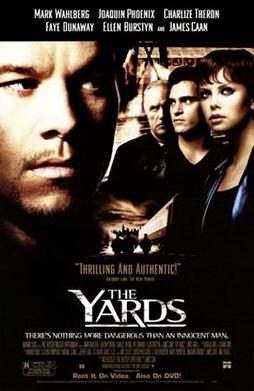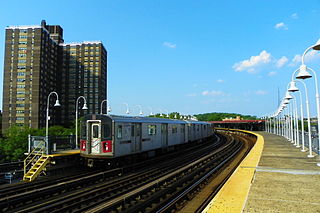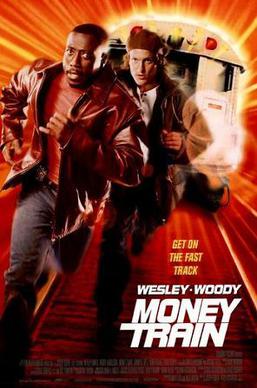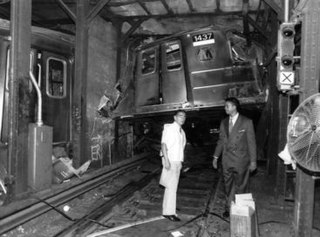Plot
On a late Sunday evening in the Bronx, punks Joe Ferrone and Artie Connors are looking for trouble. After giving a hard time to a pool hall owner for closing early, they briefly harass a passing couple, then mug an old man for his eight dollars and beat him into unconsciousness.
Bill Wilks, his wife, Helen, and their sleeping 5-year-old daughter board a southbound 4 train at the Bronx's Mosholu Parkway station at 2:15 AM, after Bill refuses to take a cab to their home in Flushing, Queens, suggesting his wife is a spendthrift. When they enter the last car of the train, which only has one working door, its only other passenger is a sleeping derelict.
At Bedford Park Boulevard–Lehman College, teenage virgin Alice Keenan, and her sexually aggressive date Tony Goya, board; at Kingsbridge Road, elderly Jewish couple Bertha and Sam Beckerman, who have been arguing about the responsibilities of the younger generation, board; at Fordham Road, soldiers Pfc. Phillip Carmatti, and his Oklahoman friend Pfc. Felix Teflinger, who has a broken arm, board after having dinner with Carmatti's Italian-American parents.
At the Burnside Avenue station, after leaving a cocktail party, middle-aged Muriel Purvis boards with her mousey husband, Harry, whom she resents for earning less money than many of their friends and having no ambition; at 176th Street, out-of-work, recovering alcoholic Douglas McCann, boards, joined by Kenneth Otis, a homosexual who earlier made an unsuccessful attempt at befriending McCann. At Mt. Eden Avenue, frustrated and angry Arnold Robinson, and his long-suffering wife Joan, a black couple, board after attending a charitable event for inner-city youth.
Joe and Artie board at the 170th Street station and proceed to psychologically terrorize, humiliate, and degrade every single adult passenger, as the train passes through the next 15 stations. They start with the derelict to whom they attempt to give a hot foot, then move to Douglas, then to Kenneth – whom they physically prevent from leaving the train – and so on.
When the train crosses into Manhattan, the Robinsons' 125th Street station comes up first, but Arnold, enjoying the spectacle of white people tormenting each other, makes Joan stay with him to watch.
At one stop, Joe blocks the doorway to prevent two women from boarding; at 86th Street, he prevents the Beckermans from exiting, then shoves one of the derelict man's shoes into the door to prevent it from opening at further stops.
Throughout the entire train ride, no one has managed to get the upper hand on the two hoods. Joe is finally challenged when he turns his attention to the Wilks' sleeping daughter. Bill and Helen are frantic and appalled that Joe is trying to touch the child. Bill holds her to his chest in a protective grip, with the desperate parents slapping Joe's hands away as he tries to touch her.
Only then does Felix stand up and directly challenge Joe with "Stop! Or I'll put you down!" Joe pulls out his switchblade knife. Felix engages Joe in hand-to-hand combat. Despite his broken arm, and then a stab wound, Felix manages to overpower Joe, using his cast to beat Joe into unconsciousness; subsequently, Artie drops his tough-guy facade and cowers, trying to unjam the one working door and flee. The wounded Felix incapacitates Artie with a knee to the groin, leaving Artie on the floor in agony.
The train soon makes a lengthy stop at the main Grand Central–42nd Street station after Carmatti pulls the emergency brake handle in the car, where Carmatti finally goes over to his injured friend, causing Felix to weakly but disgustedly ask "Where were you buddy?" Carmatti shouts into the station for the police, who enter the train and, without asking any questions, start to arrest the only black man in the car, Arnold. Passengers cry out, "Not him!" The cops instead pick up and take the bloodied Joe off the train, and a conductor helps the still-moaning Artie off the floor and out. None of them helps the bleeding Felix, who is finally helped off the train by Carmatti.
The other passengers, still frozen in their seats, are stunned. Only when the sleeping drunk rolls over and falls to the floor do the passengers slowly begin to exit the train, stepping over the drunk's unconscious body as they go to the door.














